The videos are taken before we began any work on technique.
Notice that the turns are initiated by standing up on the uphill ski – but with the upper body going backwards instead forwards and at best only a passive motion of the Centre of Mass into the turn.
We began technical work with Dynamics and Skating then later adding Side Slipping and Pivoting.
For Fergus we worked a little on Forward Pressure to get him off the backs of the boots. Skating exercises are excellent for helping with this.
Basic Dynamics
- Skis must be travelling forward – like a bicycle
- This is mainly about using the outside leg (start of new turn) to push the centre of mass into the centre of the new turn – for the whole duration of the turn
- There is no “balance” when skiing – dynamics is the physics of disequilibrium
- You are looking for stability from organised accelerations (ski technology!)
- Notice in the photos below the outside leg is essentially straight in a skating action (flexion for absorption and other purposes is primarily at the hip joint)
- The centre of mass goes down toward the snow – and to complete the turn it comes back up – like a motorbike in a turn
- There is no “Centrifugal Force” acting on the skier – only a deflection inward away from a straight line. This deflection is used to lift the skier up at the end of the turn – which involves “finishing” the turn – I.E. turning almost back up the hill.
- Remain square to the skis (follow the skis around the turn with your body) until you are really comfortable with movement of the centre of mass and clearly aware of moving it.
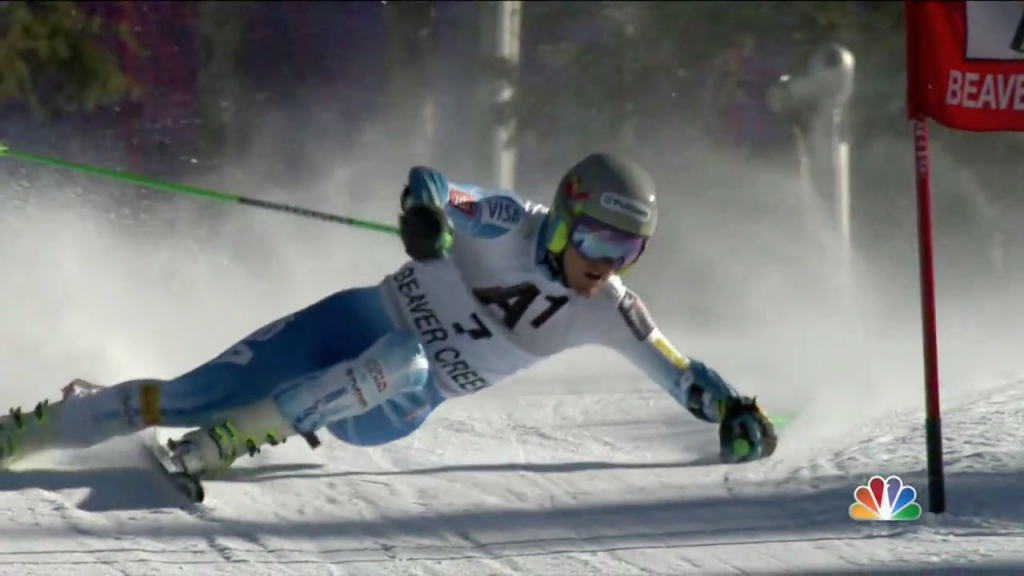
Skating/Adductors
Skiing is just disguised skating. The main difference is the skis are wide and have two edges When diverging the skis outwards at the tips into a skating stance the skis want to flatten on the snow and the stiff shaft of the ski boots will pull the knees outward. The adductor muscles need to be engaged to hold the skis on their inside edges. This is a pattern of muscle use – the adductors of both legs contracting – that should be maintained when skiing parallel.

The other difference between skis and skates: – it’s just that skis bend and scribe arcs on the ground and are generally used on slopes not flat lakes. Skating actions are fundamental for a skier’s development because they involve independent leg action where only one leg at a time is really used. Although skiers can stand on two feet the body is oriented specifically on one hip joint at a time (when turning) and has to function as if standing on one leg. Skating exercises such as skating step turns are helpful in developing basic skills. Skating turns use diverging skis (opposite from snowplough) and incremental stepping of the centre of mass inward toward the turn centre. This is ideally the first sort of turning that any complete beginner should experience – on flat terrain.

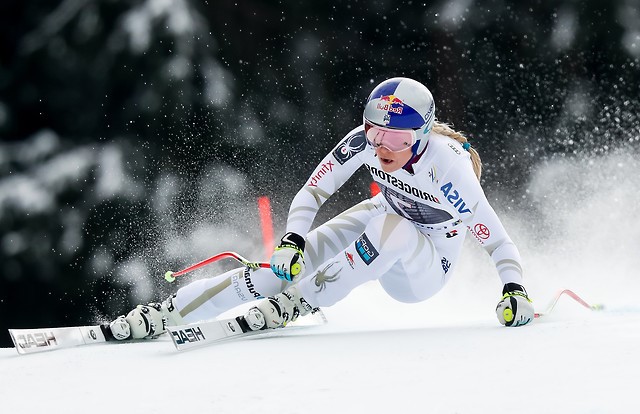
Side Slipping (Joystick Control of Centre of Mass)
- Feet close together (Both skis on uphill edges – both adductors engaged)
- Move centre of mass downhill slightly to side slip
- Also move centre of mass either forward or backward to diagonally side slip
Pivot (Skis sliding Sideways)
Pivoting is derived from the skis sliding sideways and can be developed from side slipping (It’s a braking form of turning). With a “pure pivot” as an exercise there is no forward travelling of the ski across the hill. Support for the centre of mass is now provided by support from a downhill pole plant. This is the real reason why we have ski poles! There is a full dedicated explanation of pivoting at the following link: “PIVOT“
Combining Dynamics and Pivot
- Dynamics depends of forward motion of the skis and lateral falling/pushing of the centre of mass
- Pivot depends on lateral motion of the skis – but always with the centre of mass being driven inward (toward the turn centre)
- The two can be combined – when there is both forward and lateral motion – making overall control of trajectory and speed totally under control of the skier
- In all cases there must be active adductor muscle use – and the feet must be “everted” ie. turned outward inside the ski boots – diverging sightly (skating stance)
- The essential element to take from combining pivot and dynamics is to execute the turn transition from the uphill edge of the uphill ski – noting that the ski enters the new turn more easily than when on its inside edge and this also prevents stemming (and body rotation)
Today’s photos…
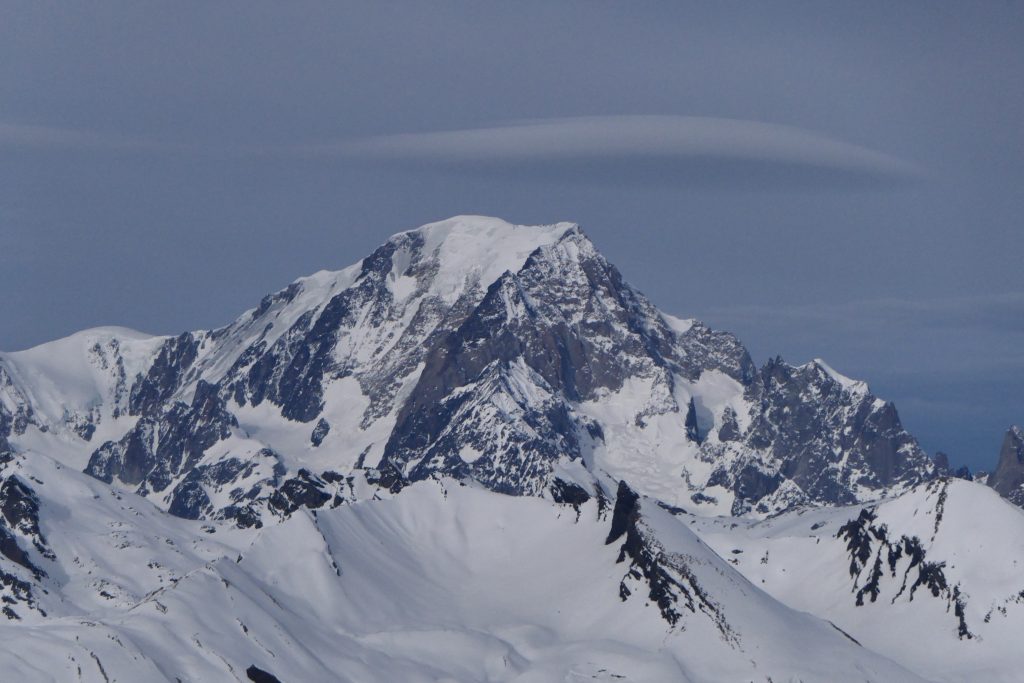


Day 2
Just reinforcing the dynamics – skating the body actively into the new turn and bringing the upper body forward while doing so. Good progress.
Moving on from here:
- Keep the head up and look ahead
- We need to work on hip angulation to prevent upper body rotation (Mainly Graham)
- On moderate gradients it’s not necessary to finish the turn fully across the hill – loses too much speed and makes the next turn hard to start.
Archie worked on pivot and then applying it to black run moguls – and compression turns.
Today’s photos…
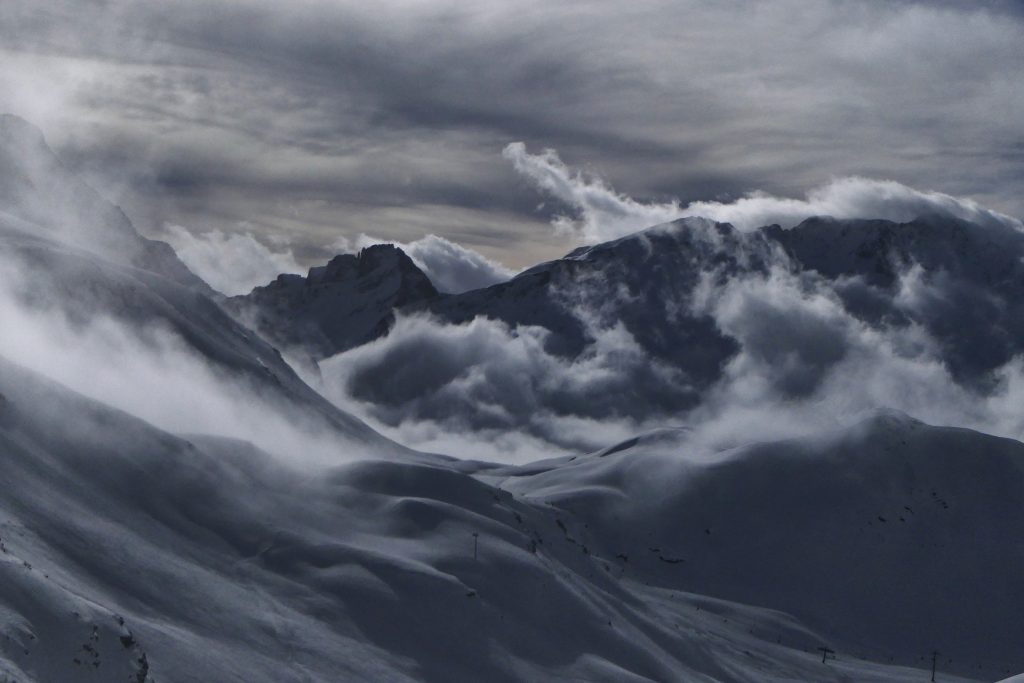
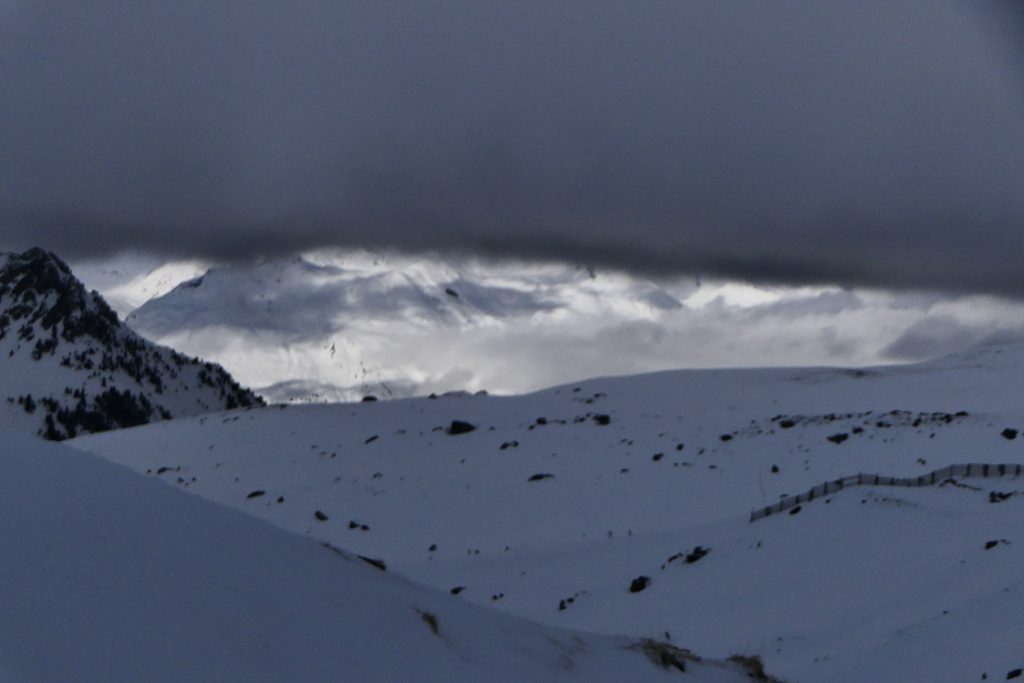
Day 3
- More reinforcement of dynamics for Nicole
- Pivoting for Fergus
- Skating for Fergus
- Feet Forward Technique
- Hip Angulation and Protecting the Spine
- Finishing a turn with Dynamics
Feet Forward Technique
“Feet Forward Technique”… gives security through the start of a turn on steep terrain by tightening the turn radius.
Pushing the outside (uphill initially) foot forward during the turn. The foot never gets in front of the other foot – it just tightens the turn instead.
The exercise is practised with skis off and standing in ski boots. For this static exercise we use ski pole support with the body faced downhill with the uphill foot pointing across the hill and the downhill foot pointing downhill and the heel jammed into the snow. The uphill boot is pulled over onto its inside edge and pushed forwards in a natural arc.
Here is some video of exactly the same action in ice hockey training. In skiing the direction of travel would be straight downhill instead of straight ahead on the flat ice.
(Hip Angulation)
Take a look at the two Olympic champion skiers in the photograph below.
Killy’s image from the 1960s has his chest facing downhill whereas Noel’s image from 2022 has his chest facing forward. What Killy is doing destroys your lower back and is probably why he never went on skis again after he stopped racing.

Protecting the Spine
- Hold the front of the pelvis up – aiming for “neutral pelvis”
- During the turn pull the outer hip backwards so that the ski doesn’t pull it in front of your ribs
- Look for a stretch between the ribs and hip joint
- Look for a reflex contraction of the lower abdominals – the postural reflex
- Keep the shoulders/chest following the skis (to some degree)
- Always “counter turn” the pelvis more than the chest/shoulders
- For tighter turns with more pivoting start to use the pole plant to some degree
- The more “countered” the pelvis the more the next turn can be “anticipated”
Source of Hip Angulation
The upper body needs to tilt forward over one hip joint – then rotate around it. This is in addition to pulling back the outside hip etc.
The body shape produced alters the location of the centre of mass enabling pressure on the ski fronts and also greater agility both into and out of turns – and pole planting if the skis are swinging laterally.
The hip angulation also provides flexion of the hip joint that gives absorption of shocks.
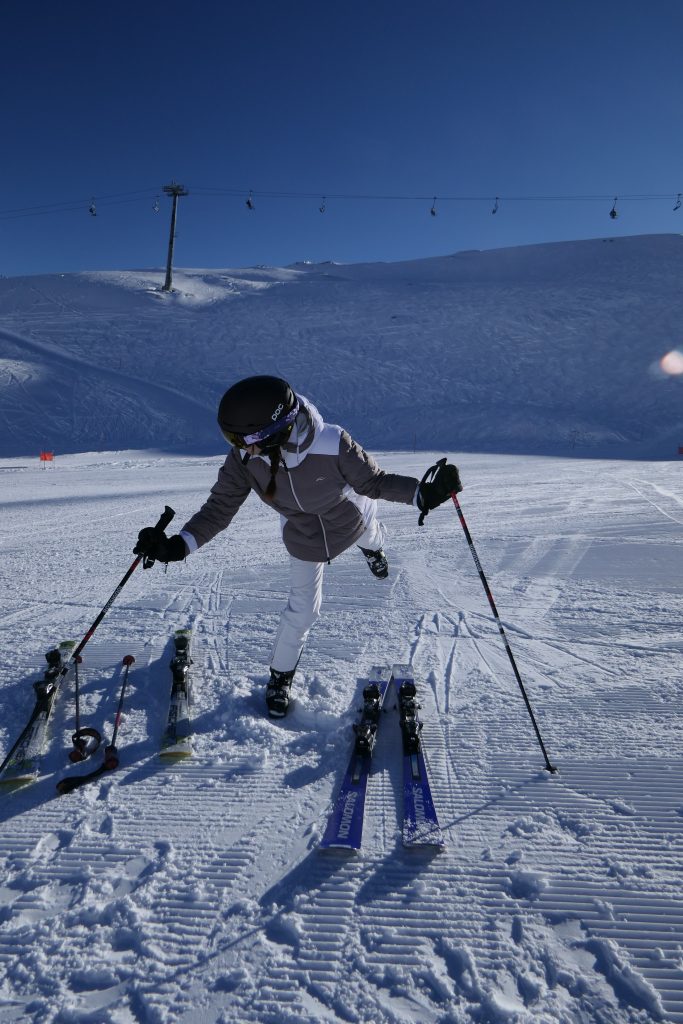
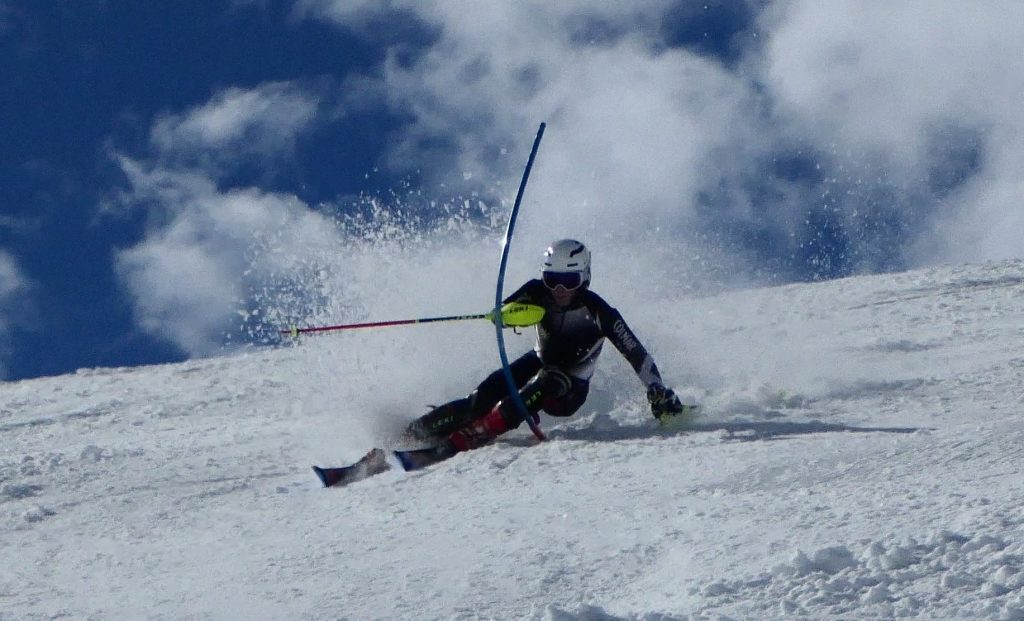
End of Turn Dynamics (linking turns)
Especially when off piste in poor snow it’s important to use the energy of the ski lifting the body up and levering it out of the turn to the point where it ejects the body out of the turn and commits to the next turn – without traversing and killing the energy by going into a traverse. This takes not only commitment but experience. There’s an exercise called a “Hanger Turn” where this is exaggerated – see the following photo..

Today’s photos…

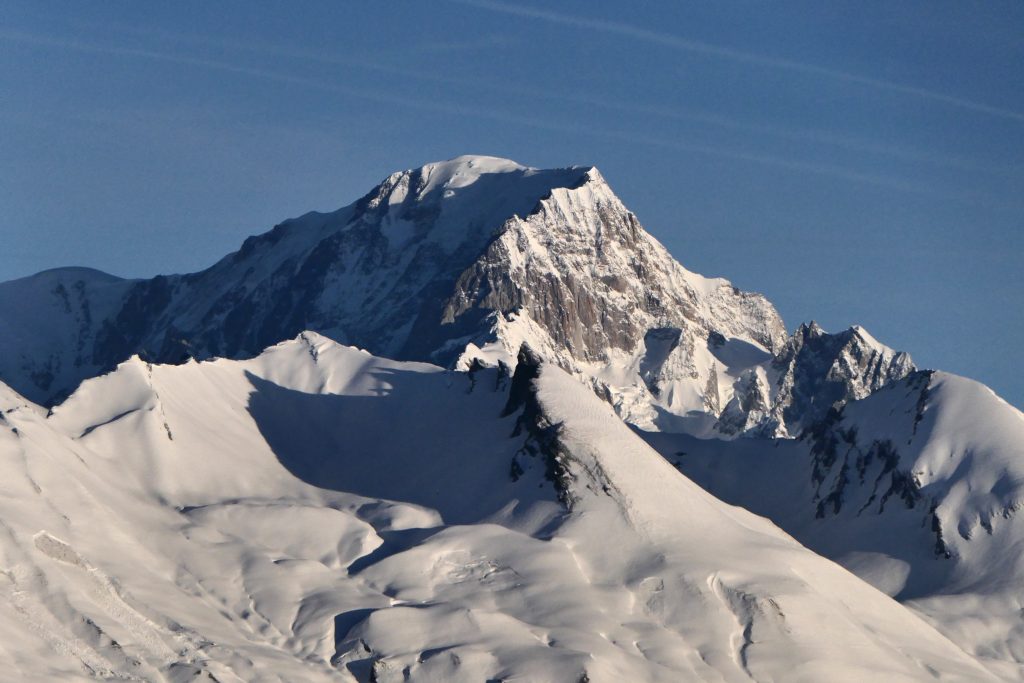
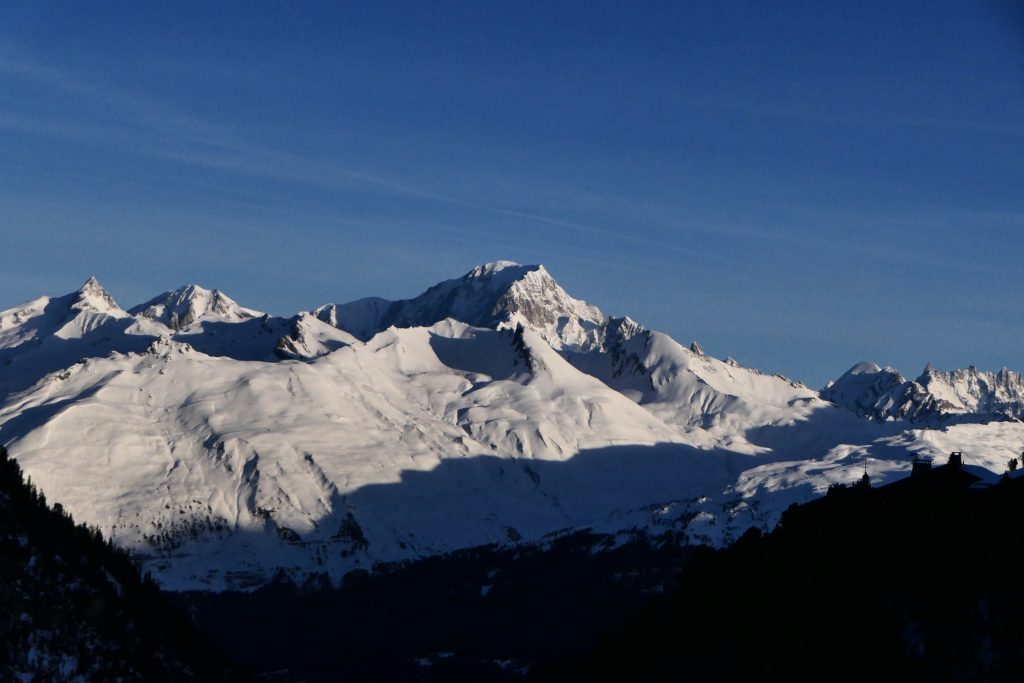
Day 4
Nicole: Only introduced one exercise today – padding the inside ski on and off the snow throughout the turn. The change of weather was affecting most of us and Nicole didn’t feel confident – however after some skiing she recovered her dynamics and was keeping a good pace and rhythm.
Graham: Working on improving the “pivot” with exercises and steep terrain.
Good dynamics – pushing off with the uphill leg – uphill ski mostly allowed to pivot into the turn. Main area that needs work is to increase angulation and avoid rotation – image below shows the upper body rotation…
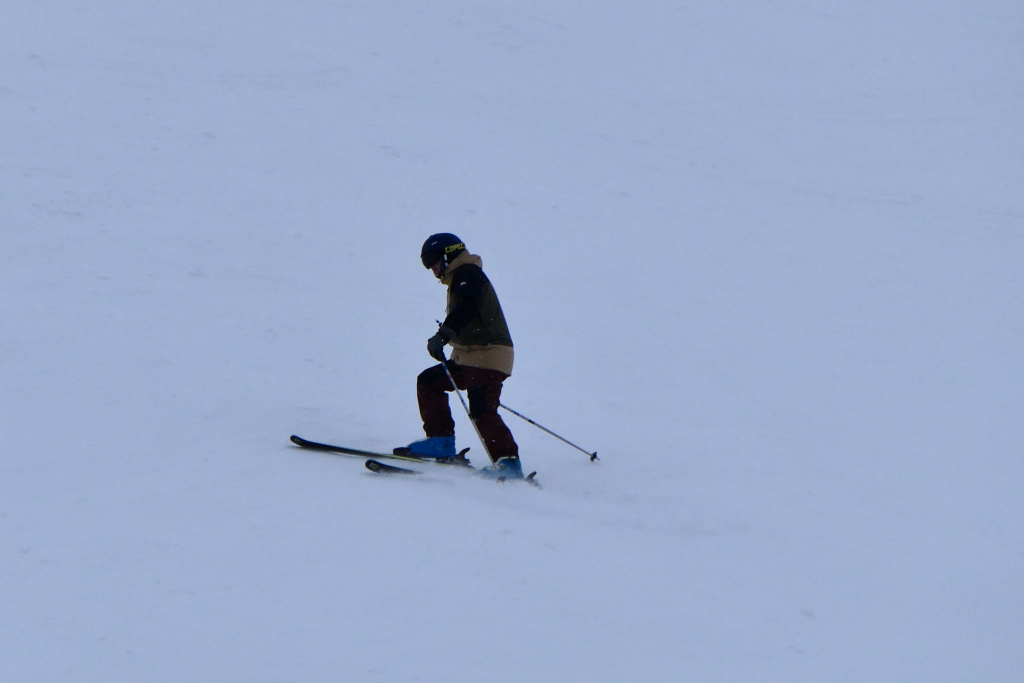
Example of angulation… avoiding the upper body rotating into the turn…
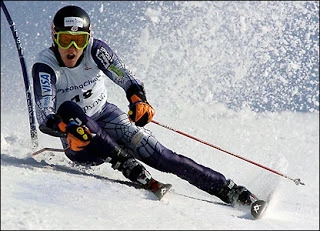
We worked on the following exercises to develop the pivot from the uphill ski…
- Short Swings (Jump Turns)
- Compression Turns
- Garlands
- Narrow Stance / Wide Stance
Short Swings (narrow stance) require a downhill pole plant and jump from the uphill edges of the skis.
Compression Turns (narrow stance) require a downhill pole plant and a deep flexion of the knees (90°) before swinging the ski fronts into the turn (this simulates the compression of a mogul/bump.)
Garlands across the hill allow a clear sensation of entering a turn from the uphill edges of the skis.
Narrow Stance / Wide Stance The wide stance on the steep permits the uphill leg to flex more and so to make a clearer leg extension and hence “single ski” pivot effect.
In the deep snow photo below look how the centre of mass is crossing over the skis into the next turn but the skis remain on their uphill edges… (ie – a carved turn would instead have the skis strongly edged)

Carved turn…
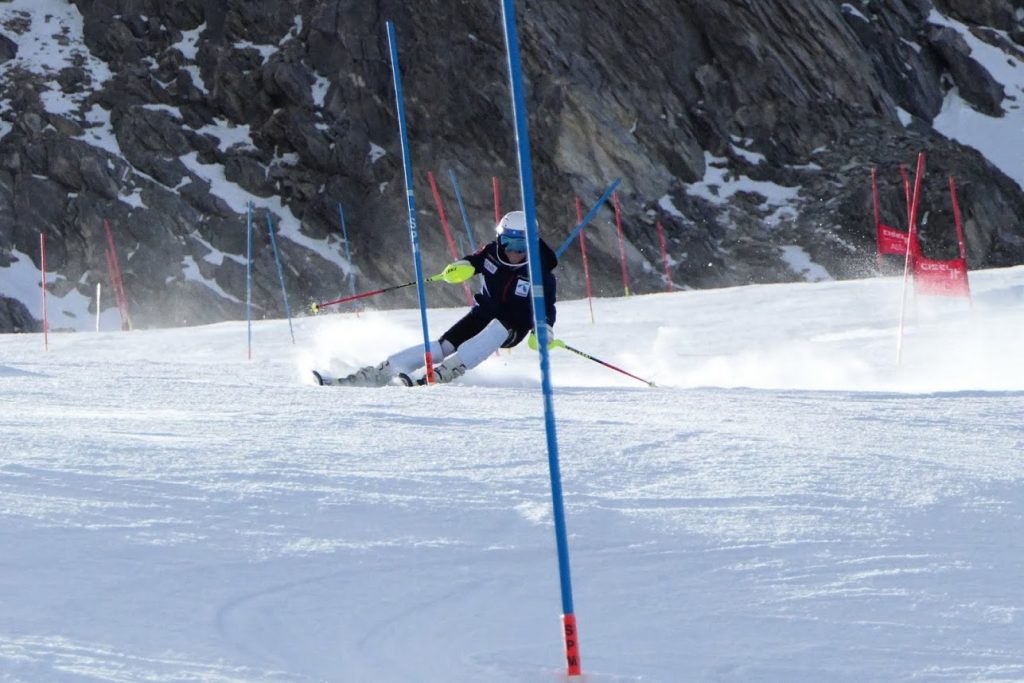
Day 5
Graham employing the legs and the upper body directly in “dynamics”…
There is more fluidity and self confidence with higher speed and even invariable snow conditions.
Graham is an excellent student – extremely responsive and aware. Today he happily agreed to allow me to teach something that I’ve never attempted to teach before – but that seemed totally appropriate. There’s no name for this yet so I’ll just describe the overall context and elements.
Scrolling up to “Day 3” and under “Hip Angulation” there are contrasting images of two Olympic gold medal skiers – 60 years apart. Killy is facing his chest downhill and more recently Noel is following his skis.
Our goal was to eliminate upper body rotation – but so far working on hip angulation wasn’t very successful on its own. However the goal was to end up like Noel – who does use an degree of upper body “rotation” yet manages to convert it into something constructive and maintain hip angulation simultaneously.
Scrolling up to “Day 4” we see a frame grab of Graham in full rotation with his uphill hand hidden behind his body out of sight. The instruction was to prepare this uphill hand to be read to literally punch straight down the hill with it – making the upper body active in the process of the transition of one turn to the next.
There are three primary effects
- This prevents the arm and shoulder from swinging backward through the turn
- This connects with the leg extension/push into the next turn – like a “punch” with the whole body behind it
- This opens up a protective stretch between the front lower ribs and the pelvis without recourse to pulling the hip joint backward excessively.
The overall outcome is stronger dynamics and tighter turn control
Today’s photo…


